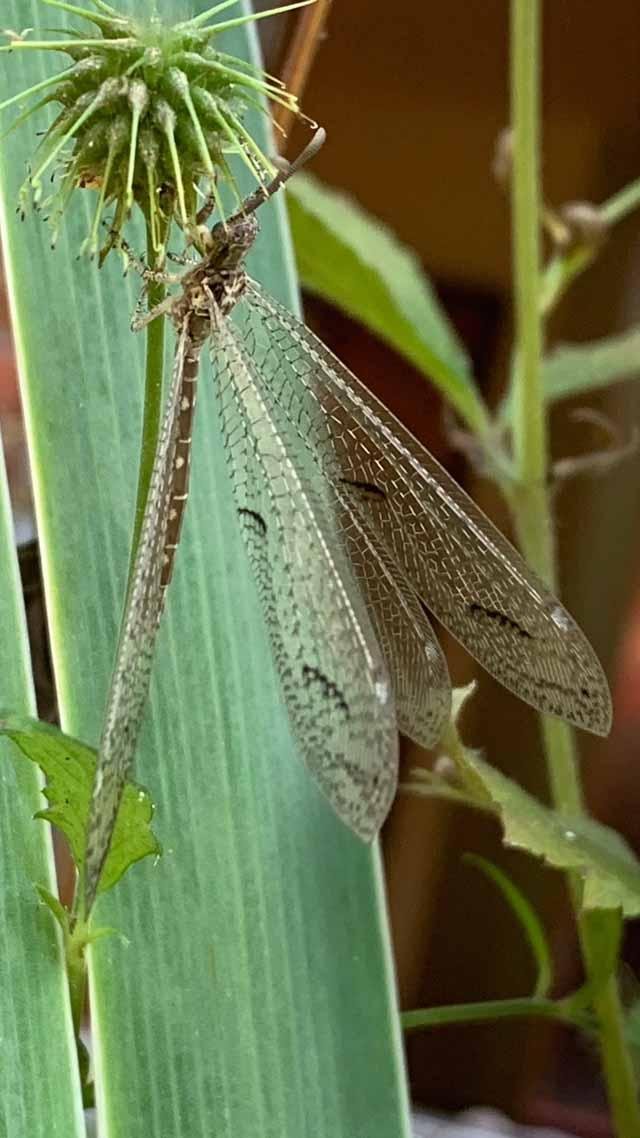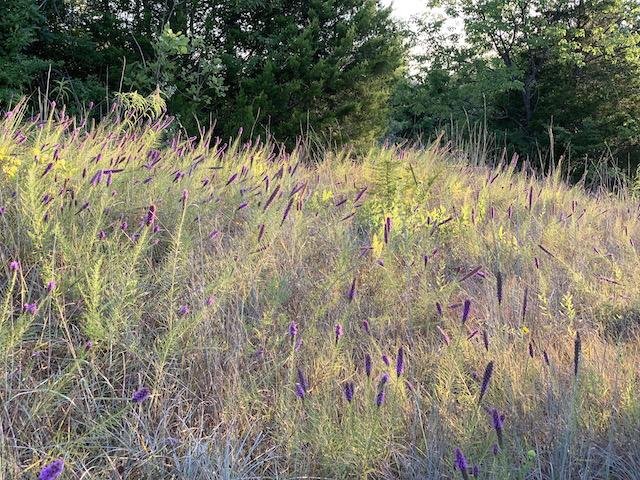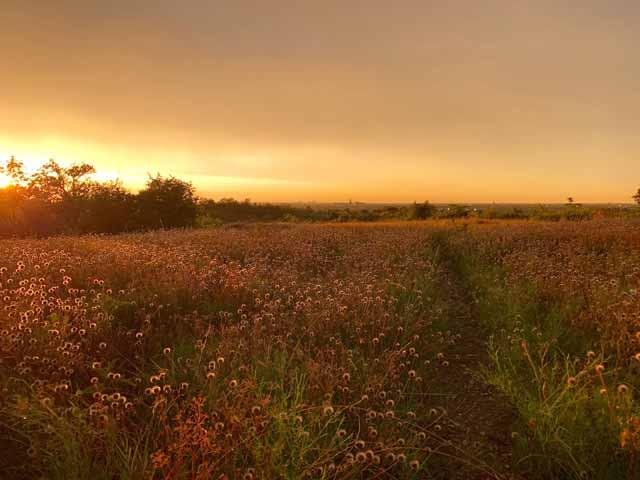Prairie Notes #152 - Damsels & Dragons
Prairie Notes are monthly photo/journal observations from Tandy Hills Natural Area by Founder/Director, Don Young. They include field reports, flora and fauna sightings, and more, mixed with a scoop of dry humor and a bit of philosophy.
They are available free to all who get on the FOTHNA email list.
Damsels & Dragons
Prairie Notes #152
August 1, 2019
01) Damsels & Dragons
02) Field Report - July
03) New Species - July
04) PrairieSky / StarParty News
05) Painted Prairie Skies
06) Prairie Proverb - Florence Merriam Bailey
01) Damsels & Dragons
As of August 1, 2019, Tandy Hills has received 25” of rain for the year. Throughout the spring and early summer there has been one storm system after another. As you’ve seen in photos from the past few Prairie Notes, the wildflowers responded to all that water with floristic vigor.
Those millions of wildflower blooms attracted enormous quantities of pollinators and other insects and those bugs became a feast for the migratory bird population including, Western Kingbirds and Scissor-tail Flycatchers. I observed those and other species scooping up bugs by the beak-fulls throughout the month of July.
Don’t worry about the birds scarfing down all the pollinators though. They got the job done and the wheel of life rolled along as it should, leaving behind a massive seed bank for 2020.
Another side-effect of all that rain is, mosquitos. I recently read an eye-opening essay in the New York Times titled, The Mosquitoes Are Coming For Us. Among other things, I learned that, mosquitoes are THE all-time deadliest predator of humans. An army of 100 trillion skeeters encircle the planet killing roughly 700,000 people a year from mosquito-transmitted diseases. That’s a rather chilling factoid. (By contrast, humans kill each other at a rate of about 437,000 a year.)
It may comfort you to know, however, that another, more pleasant side-effect of a rainy spring is the preponderance of Dragonflies and Damselflies, the Odonata order of insects which means, “toothed ones”. They are currently swarming the Tandy Hills, and elsewhere, as they have for the past 300 million years AND,…they eat mosquitoes! A single Dragonfly can consume up to 100 mosquitoes a day.
They are strange looking and colorful, like, flying stained glass windows. They are speedy, agile fliers, top guns of the insect sky with four, independently powered, filigreed wings. They have VERY big eyes made up of 30,00 facets, 360 degree vision that can see colors beyond the human imagination. In mid-late summer, Dragonflies and Damselflies can be found all over Tandy Hills. So far, more than 25 species have been ID’d on iNaturalist.
Like Mosquitoes, Dragonflies and Damselflies begin life and spend most of it in water when eggs are deposited in ponds, creeks and rivers. Once the larvae hatch they live underwater for a period of time until they surface and transform into flying predators. (Imagine this: In prehistoric times, they were reportedly as large as hawks.)
You may wonder, as I did, why a relatively dry Tandy Hills is so loaded with these insects despite no permanent water source. I asked, Texas Parks & Wildlife Urban Biologist, Sam Kieschnick, to enlighten me.
“It's true that Dragonflies and Damselflies have aquatic youngsters, and it may seem odd that Tandy has so many... Buuuuut, Tandy Hills has an abundance of bugs! And bugs are food for Dragonflies and Damselflies. So, I bet they're flying in from nearby Trinity River or Oakland Lake Park. It's really not too far for a Dragonfly to fly, believe it or not. I think the main reason that the Dragonflies are at Tandy is because the habitat is great for all of the other bugs -- the food of the dragonflies.”
Finally, we already know that Tandy Hills is a special place but here’s more confirmation from, University of California Berkeley:
“The presence of dragonflies and damselflies may be taken as an indication of good ecosystem quality.”
And what a presence we are blessed with at Tandy Hills. I don't know about you, but I sleep better at night knowing that Dragons and Damsels are patrolling the prairies and bottomlands of Tandy Hills.
DY
Check out these related short videos:
> Heavy Traffic at Tandy Hills
https://www.tandyhills.org/videos/heavy-traffic
> Dragonfly Picnic
02) Field report - July
Gay-Feather, (Liatris aestivalis), made its debut in July as a dominant wildflower species while most other wildflower species began to fade out. The grasses are looking heavenly with a big boost from several thunderstorms that passed through. Pollinators and a few bird surprises completed a glorious month.
03) New Species - July
As of July 31, the species list on iNaturalist improved by at least 27 to a new total of, 1236. Included in the list was a new species for Tarrant County. Say hello to, Pale Bastard Toadflax! As is his custom lately, TP&WD Urban Biologist, Sam Kieschnick, paid Tandy Hills a visit on July 28, setting up his mothing shop and recording at least 25 new species of bugs. Here's the full list for July and a few of the more striking specimens. You can visit the Tandy Hills project page HeRE: https://www.inaturalist.org/projects/tandy-hills-natural-area-stratford-...
Big-eyed Bug (Geocoris uliginosus)
Black Webspinner (Oligotoma nigra)
Cedar Beetle (Zenoa picea)
Chinese Tallow Leaf Miner (Caloptilia triadicae)
Detracted Owlet (Lesmone detrahens)
Dwarf Tawny Wave (Cyclophora nanaria)
Fall Webworm Moth (Hyphantria cunea)
Halloween Penant Dragonfly (Celithemis eponina)
Leaf Beetle (Paria)
Leafhopper (Eutettix pictus)
Leafhopper (Excultanus excultus)
Leafhopper (Planicephalus)
Leafhopper (Tylozygus bifidus)
Long-legged Fly (Condylostylus)
Micro Moth (Blastobasis)
Pale Bastard Toadflax (Comandra umbellata ssp. pallida)
Pannaria Wave (Leptostales pannaria)
PIger Grass Tubeworm Moth (Acrolophus piger)
Planthopper (Catonia)
Planthopper (Scolops)
Planthopper (Cedusa maculata)
Polyhymno Moth (Polyhymno luteostrigella)
Riffle Beetle (Stenelmis)
Stinkbug (Dendrocoris humeralis)
Triangle-marked Twirler Moth (Taygete Attributella)
Twirler Moth (Anacampsis fullonella)
White Millers Caddisfly (Nectopsyche)
04) PrairieSky / StarParty Report
The rain-dated, July star party drew about 25 star gazers. Come on out August 10 and see what's going on in the sky above the Tandy Hills. Here's FW Astronomical Society spokesperson, Pam Kloepfer with the celestial forecast:
"In August, the constellation Sagittarius can be seen in the south. The most recognizable feature of this large constellation is an asterism of stars called The Teapot. Look for it in the south, following on the heels of Scorpius the Scorpion of July. Overhead is the constellation Cygnus the Swan, marked by its brightest star Deneb in the tail of the swan. The stars of Cygnus are arranged in the form of a cross and is also named the Northern Cross. At the opposite end of Deneb at the bottom of the cross, or the beak of the swan, is the beautiful double star Albireo. These two stars can be seen even with a small telescope. The larger orange star is a striking contrast to its smaller blue-green companion. Jupiter will continue its reign across the skies, but will be in direct competition with Saturn, now well-positioned for excellent viewing. The rings of the planet will easily be visible through a telescope. The waxing gibbous moon will be shining brightly on the night of August 10."
05) Painted Prairie Skies
I could do an entire Prairie Notes on the dazzling sunsets of July 2019. Rainshowers and thunderstorms, one after the other, conspired with the setting Sun to create some often breath-taking views on the Tandy Hills prairies. It was hard to pick the best so I've included all my faves, in chronological order.
06) Prairie Proverb - Florence Merriam Bailey
“The student who goes afield armed with opera-glass will not only add more to our knowledge than he who goes armed with a gun, but will gain for himself a fund of enthusiasm and a lasting store of pleasant memories.”
Prairie Notes© is the official newsletter of Friends of Tandy Hills Natural Area, a 501 (c)(3) non-profit organization. All content by Don Young except where otherwise noted.















































